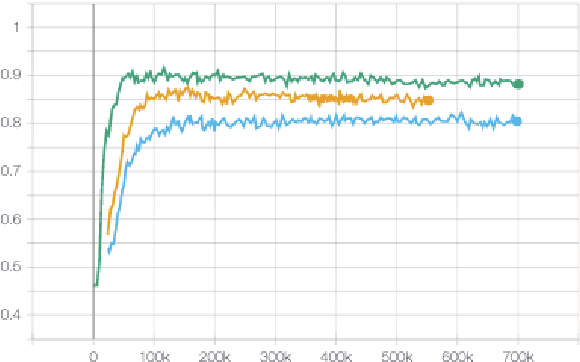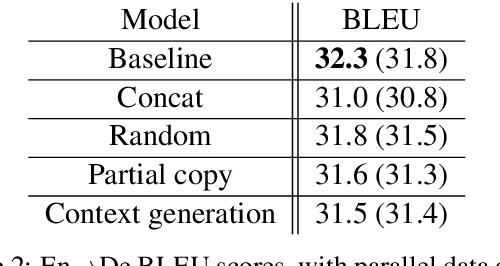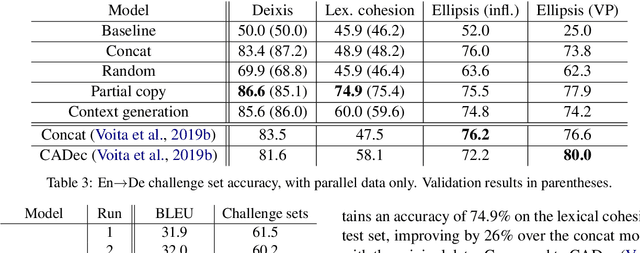Fill in the Blanks: Imputing Missing Sentences for Larger-Context Neural Machine Translation
Paper and Code
Oct 30, 2019



Most neural machine translation systems still translate sentences in isolation. To make further progress, a promising line of research additionally considers the surrounding context in order to provide the model potentially missing source-side information, as well as to maintain a coherent output. One difficulty in training such larger-context (i.e. document-level) machine translation systems is that context may be missing from many parallel examples. To circumvent this issue, two-stage approaches, in which sentence-level translations are post-edited in context, have recently been proposed. In this paper, we instead consider the viability of filling in the missing context. In particular, we consider three distinct approaches to generate the missing context: using random contexts, applying a copy heuristic or generating it with a language model. In particular, the copy heuristic significantly helps with lexical coherence, while using completely random contexts hurts performance on many long-distance linguistic phenomena. We also validate the usefulness of tagged back-translation. In addition to improving BLEU scores as expected, using back-translated data helps larger-context machine translation systems to better capture long-range phenomena.
 Add to Chrome
Add to Chrome Add to Firefox
Add to Firefox Add to Edge
Add to Edge